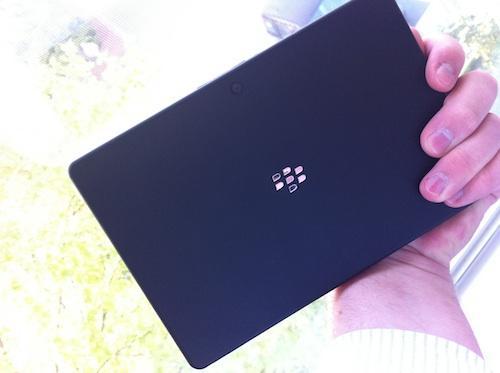
Some like it, some don't. The BlackBerry PlayBook has been a love-hate device since it was first rumored a few years ago as the BlackPad. Running QNX, a software made by the like-named company recently acquired by RIM, many hoped the PlayBook would be a refresher and a device that could pull RIM back into the race. Unfortunately, it's effects have been minimal.
The PlayBook took longer than it should have to reach shelves. When it finally arrived, it was still not quite ready and faced some pretty stiff competition. The original fanfare that surrounded RIM's ninth-inning rally device quickly dwindled to a slight murmur. So what was it exactly that made the PlayBook's launch so underwhelming? Well … a few things, actually.
The largest blame has to go to the state of the software. The PlayBook shipped without the standard native BlackBerry apps like Mail, Calendar, Memopad, Tasks, etc. The only way to use these applications were to use Bridge software and connect your BlackBerry handset to your PlayBook. Once disconnected, all of the data from those apps went with the paired handset. This alone turns non-BlackBerry users away. You can, of course, download a third-party application from App World, but the availability of applications in App World is rather sparse in comparison to its Android and iOS counterparts.
This leads me to my next point. (Let's be clear, applications aren't everything when it comes to smartphones – they play a big part, but they aren't everything. With tablets, on the other hand, applications play a much larger role.) Without application support, a tablet is basically an over-glorified, overpriced Internet browsing device. Since App World launched, RIM has been bending over backwards trying to get developers to take to their platform, but the likes of App Store and Android Market have diverted developers' attention elsewhere. This is where RIM shot themselves in the foot – one way or another, this was bound to happen.
Instead of continuing their pursuit of new and more developers, RIM has taken advantage of the open source state of Android and its similarity to their QNX software. How so? By working to make Android apps work on their tablet. A few days ago, my Twitter feed was flooded with PlayBook owners taking pictures of their tablet running Android apps. From what I've seen and heard, the apps run fairly smooth. Some love this idea, a BlackBerry-Android fusion. But for the majority of smartphone owners, this will not be the case.
Some will argue that this was a good move on RIM's part. Personally, I think it was a necessary evil that they couldn't avoid. Having their own software and application catalog of their own offers differentiation. Without that, buyers will question why they need a PlayBook over an Android tablet. From a developer's standpoint, they have to consider which platform will be the most lucrative for them and minimize the necessary work. Seeing that they can develop for one platform and their app can be played on two separate platforms, developers could stop developing for App World altogether and still have the same reach with their application.
Another culprit in the PlayBook's lackluster launch is hardware. The build of the RIM-made tablet is actually rather nice. I like the design and love the executive, industrial look of the device. But it only comes in one size (physical, not memory capacity). Steve Jobs once spoke out against 7-inch tablets, calling them “useless" and too small. While I do not totally agree with Jobs, RIM should have brought the PlayBook to market in various sizes. Some people like 7-inch tablets, but I think the consensus is that a 9- or 10-inch display suits these devices much better, considering the main advantage of a tablet over a smartphone is the display size.
The PlayBook is the perfect tablet for corporations and businesses trying to protect their information and keep employees in check. But RIM has tried to market this business-centric device as a basic consumer item. It works and it performs its job well, but by RIM showing that they have more faith in the Android Market than their own App World and the limited selection in device hardware, it only makes sense for non-BlackBerry using, potential tablet buyers to take the tablet plunge with an Android-powered or Apple-made tablet.
Personally, I've had a hard time not buying a PlayBook myself, but I'm not your average consumer. I'm a tablet addict and a former 'Berry head. Regardless, I'm still left wondering how things could have been for the PlayBook. Could it have been much more if RIM had done things differently? Would a 10-inch PlayBook be any more enticing? Or was a BlackBerry tablet doomed from the start?